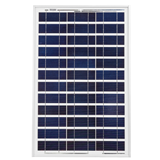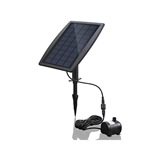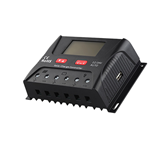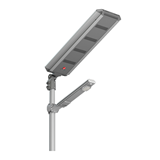Researchers used dye-sensitised solar cells (DSSCs) rather than the traditional silicon. This dye adsorbs light energy and produces a current that is transferred into a metal oxide, niobia. Niobia is an inexpensive, chemically stable and environmentally friendly material.
The work at RMIT was conducted by PhD student Jian Zhen Ou and supervised by Associate Professor Kourosh Kalantar-zadeh from the School of Electrical and Computer Engineering.
The four other universities involved were the US Massachusetts Institute of Technology (MIT); University of California, Los Angeles, (UCLA); the University of New South Wales; and the Korean Gwangju Institute of Science and Technology.
Mr Ou has received multiple awards during his PhD program including the 2011 Chinese Government Award for Outstanding Student Abroad.
Associate Professor Kalantar-zadeh said that for the first time, using niobia, they obtained a high conversion efficiency at least 30 per cent higher than those of the traditional DSSCs which had mainly used the metal oxide, titania.
"The key to this huge success lays in structuring niobia into our desired nano-architecture by using a simple, highly-controllable and large-scale producible technique," he said.
"Interestingly, this so-called anodisation technique is widely used as a conventional method in various industries for generating hard coatings and glazed surfaces, but rarely in nano-niobia production.
"Our work suggests that niobia can be used as the star material in DSSCs and provides a viable solution to boost the conversion efficiency to the values that far exceed that of silicon-based solar cells."
Meanwhile In a paper published in the Journal of Organometallic Chemistry, Swinburne University of Technology Professor Feng Wang has described the structure of one of the fundamental building blocks in modern chemistry, an organometallic chemical compound called ferrocene, which could also have a significant impact on Australia's growing solar power industry.
Millions of dollars are being spent investigating opportunities to develop solar panels out of the synthetic material because it is stable and inexpensive to produce. Unlocking the properties of ferrocene will help pave the way to the development of a global solar power industry.
"Ferrocene is one of the most important compounds in chemistry, so we are very excited to be playing a small part in unravelling its secrets," Professor Wang said.
"The discovery of ferrocene in the 1950s prompted the evolution of a whole new branch of chemistry - but until now, nobody has been able to conclusively prove its molecular structure.
"The sandwich complex which combines two pentagons with an iron atom in the centre with two conformers is a little like twin children - they look like each other but have different functions, depending on the angle they have to each other. This difference in response to each other creates different levels of iron vibration. By measuring this vibration, we can identify how the ferrocene molecules align to each other."
Professor Wang is an expert in molecular structures, working at the intersection of chemistry and physics, using Swinburne's supercomputer to develop molecular models for projects ranging from cancer drug targeting to solar cell development.
When conducting tests on the properties of ferrocene, she noticed some slight irregularities in the compound's properties when analysed at particular infrared (IR) spectra using computer simulated IR spectra. Closer examination and testing indicated the behaviour of ferrocene molecules at different wavelengths - triggering the discovery.
Light-sensitive solar dyes incorporated into ferrocene/ferrocenium have been demonstrated to have great potential for ferrocene-based electrolytes in solar cell applications. An appropriate understanding of the properties of the compound is particularly important in this development.
Professor Wang will collaborate with colleagues from the University of Melbourne and the Australian Synchrotron to conduct further research into the exact nature of ferrocene using the Australian Synchrotron later this year.










